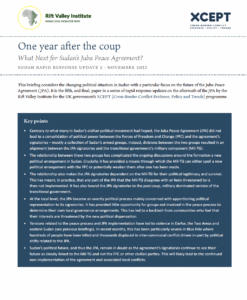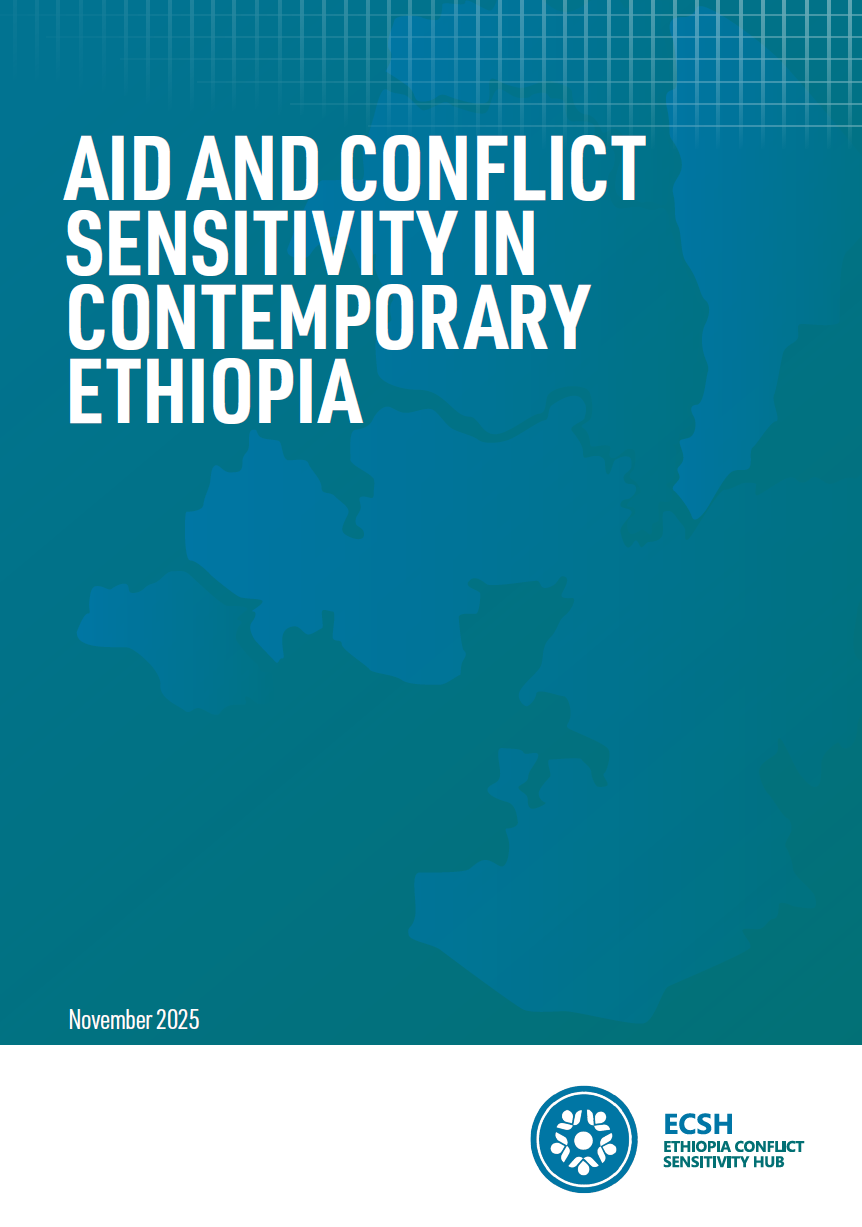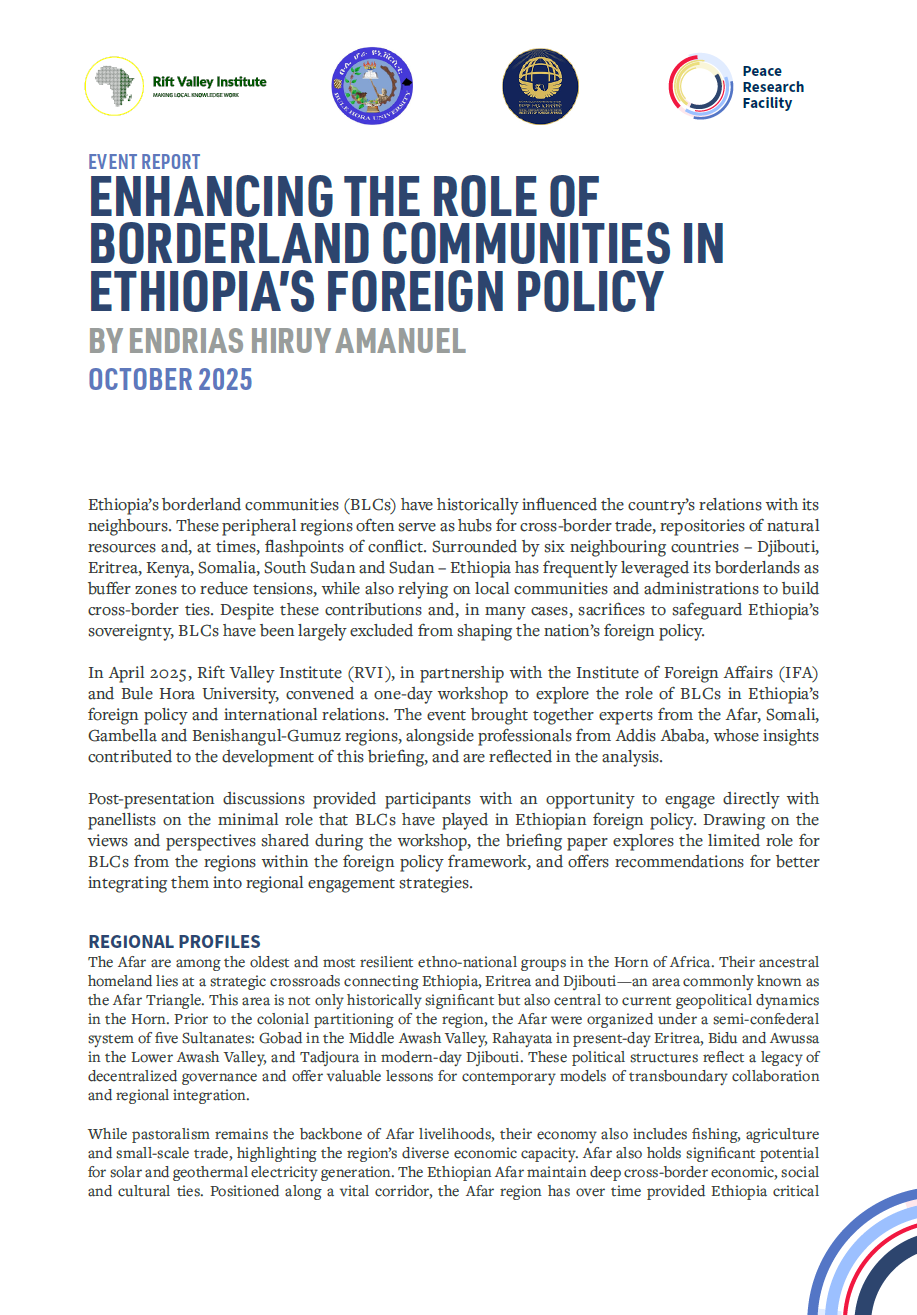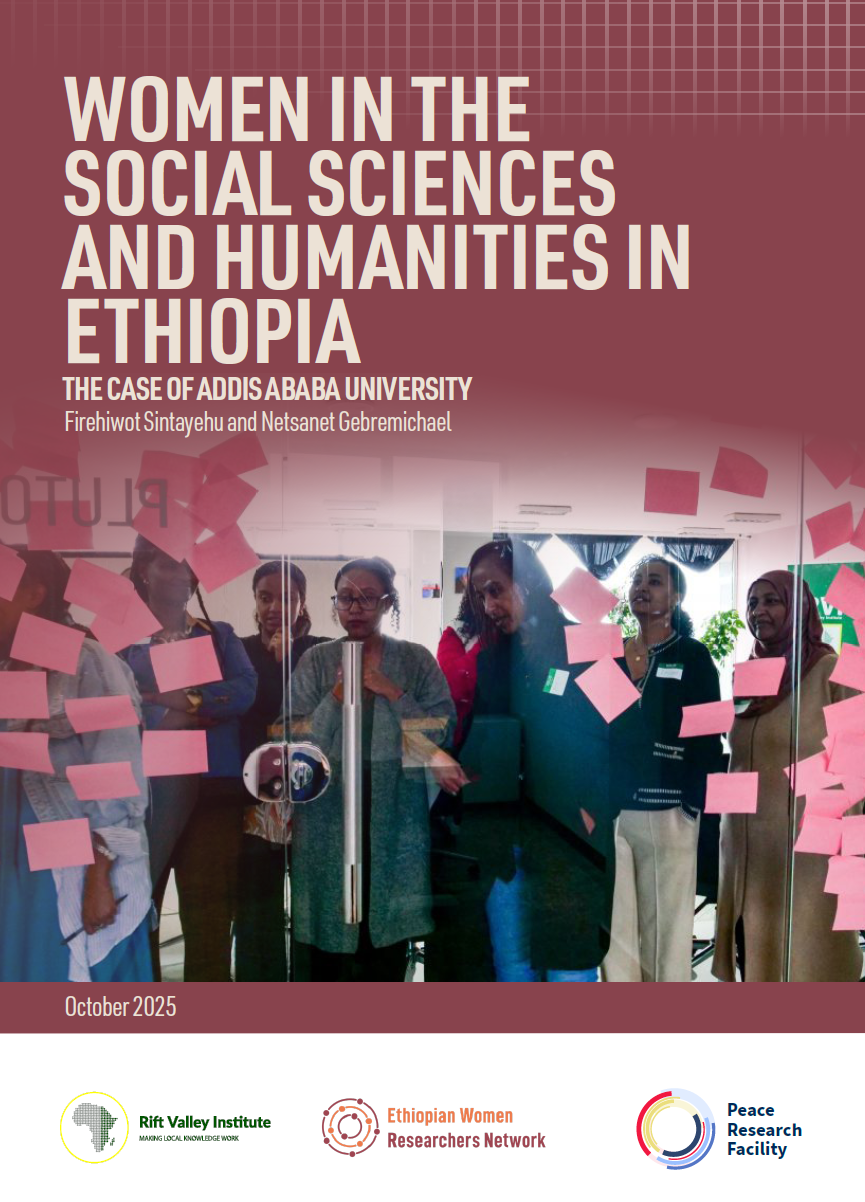This briefing considers the changing political situation in Sudan with a particular focus on the future of the Juba Peace Agreement ( JPA).
It explores how the relationship between two key factions in the conflict has complicated the ongoing discussions around the formation of a new political arrangement in Sudan.
Contrary to what many in Sudan’s civilian political movement had hoped, the JPA did not lead to a consolidation of political power between the Forces of Freedom and Change (FFC) and the agreement’s signatories – mostly a collection of Sudan’s armed groups. Instead, divisions between the two groups resulted in an alignment between the JPA signatories and the transitional government’s military component (Mil-TG).
The paper is the fifth and final in a series of rapid response updates on the aftermath of the JPA by the Rift Valley Institute for the UK government’s XCEPT (Cross-Border Conflict Evidence, Policy and Trends) programme. You can visit the previous series updates; ‘What Next for the Juba Peace Agreement?’, ‘What Next for the Juba Peace Agreement? Evolving political and security dynamics in Darfur’, What’s Next for the Juba Peace Agreement? Evolving Political and Security Dynamics in the Two Areas, and What Next for Sudan’s Peace Process? Political and Security Dynamics in the East.




